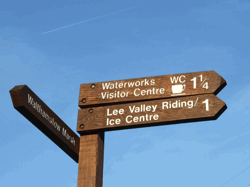2.2 Local Policies
Legislation and guidance has emphasised the importance of including firm
Conservation Area policies in the Unitary Development Plan (UDP), which must in turn
be based on a clear definition of what constitutes that "special architectural or historic
interest" which warranted designation in the first place.
The Environmental Quality chapter of Hackney's Unitary Development Plan of 1995
contains Policies EQ11 to 15, concerning the designation and control of Conservation
Areas. The justification to Policy EQ15 explains that the existing historic areas within
the Borough fall roughly in four groups, and as staff resources permit, the Council will
consider the designation of further Conservation Areas, and the amendment of
boundaries to existing Conservation Areas. These groups are:
? Town centres and village cores: with buildings of varying age and type that will
also include Georgian and Victorian ribbon development; for example, Dalston
Lane and Broadway Market.
? Residential areas: especially areas characterised by villas - a particularly well
developed Hackney building type.
? Open spaces and their settings: for example, London Fields and Stoke
Newington Common.
? Industrial Heritage: for example, the Regent's Canal and Waterworks Lane,
Lea Bridge.
|
